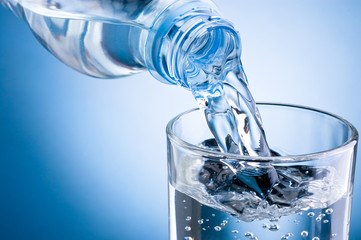Researchers studying the movement of plastic debris through the Great Lakes estimate nearly 10,000 metric tons, or 22 million pounds, enter the system every year.
That is the equivalent of 200 Olympic-sized swimming pools full of plastic bottles.
In an article to be published in an upcoming issue of Marine Pollution Bulletin, computer simulations were used to follow the flow of plastic debris through the system.
Lead author Matthew Hoffman, an assistant professor at the Rochester Institute of Technology, said this study is the first to show the true scale of plastic pollution in the Great Lakes and how it can move across state and international boundaries.
“Most of the particles from Chicago and Milwaukee end up accumulating on the eastern shores of Lake Michigan, while the particles from Detroit and Cleveland end up along the southern coast of the eastern basin of Lake Erie,” Hoffman said. “Particles released from Toronto appear to accumulate on the southern coast of Lake Ontario, including around Rochester and Sodus Bay.”
An estimated half of the plastic pollution entering the Great Lakes system — about 5,000 tons — ends up in Lake Michigan, says the study.
That amounts to approximately 100 Olympic-sized swimming pools full of plastic bottles for that lake alone.
Lake Superior experienced the lowest amount of plastic pollution in the study, estimated at 32 tons per year.
Microbeads, small pellets of plastic often used in soaps, toothpastes and other items, as well as other small pieces of plastic, can be consumed by wildlife and possibly enter the food chain.
The study modelled the distribution of plastic debris between 2009 and 2014 and used data from the National Oceanic and Atmospheric Administration to simulate currents.
Major population centres, like Chicago, Toronto, Cleveland and Detroit, are the primary sources of plastic pollution in the system, says the report.
Further, the amount of plastic released from those cities outweigh the accumulation of plastic on their shorelines,
In contrast, earlier studies have estimated between 40,000 to 110,000 tons of plastic enter the oceans along the U.S. coastline.
Unlike plastics found in the ocean — which tend to accumulate in floating ‘garbage patches’, plastic in the Great Lakes system often wash up on shore.
The study says that plastic accounts for about 80 per cent of the litter found on the shorelines of the Great lakes.
